
Extrusion Blow Molder
Extrusion Blow Molder
Leshan Intelligent Equipment Company, located in Foshan, Guangdong Province, China, was founded in 1995 and has 20 years of manufacturing and technical development experience in the field of blow molding machines. Our current products mainly include Food bottle blow molding machine,Daily chemistry bottle blow molding machine,Blowing Mould & Injection Mould,Cleaning bottle blow molding machine,PET Machine,Auxiliary machine,Milk bottle blow molding machine,Extrusion Die Head,Irregular shape product blow molding machine,Chemical barrel blow molding machine, etc.We also use International standards and the ISO9001:2012 quality management system in producing.
LESHAN has Numerical-controlled cutting machine,Numerical-controlled knee bend machine,Four axis CNC machining-center,Pentahedron gantry machining center and other specialized equipment. We have our own export rights and export our machines to various parts of the world.For example, countries such as Russia, Australia, Bangladesh, Vietnam, Mauritius,Saint Lucia,Lesotho, etc.Leshan Hydraulic Blow Molding Machine is adopted by many listed companies and China's top 500 enterprises, such as Sinopec,Unilever,Monarch,Bawang,Walch,Wahaha,Liby,Cnice, ect.
| Parameter | Information |
| Product Name | extrusion blow molder |
| Brand Name | Leshan |
| Place of Origin | China |
| PLC Brand | Siemens |
| Core Components | Engine,Gear,Pump,Pressure vessel,Motor,Bearing...etc |
| Warranty | 1year |
| Plastic Processed | PE,PVC,HDPE,PC,PA,PP,ABS...etc |
| Application | Bottle |
| Port | ShunDe/GuangZhou/ShenZhen China |
| MOQ | 1 Set |
| Export Country | Russia, Australia, Poland,Comoros,Bolivia,Namibia,Azerbaijan...etc |
| Export region | Europe,Oceania,Asia... |
| Certification | ISO 9001,CE...etc |
| Automatic | Yes |
| Screw L/D Ratio | 24 |
| Packaging Details | Standard exporting machine packing with plastic film |
| Color | Customized |
| Accumulator Capacity(L) | 100 L |
| Service | Video technical support... |
| Supply Ability | 500 Set/Sets per Month |
| Lead time (days) | 70 (To be negotiated) |
Please note: The above table data is for reference only. For specific information, please contact us.
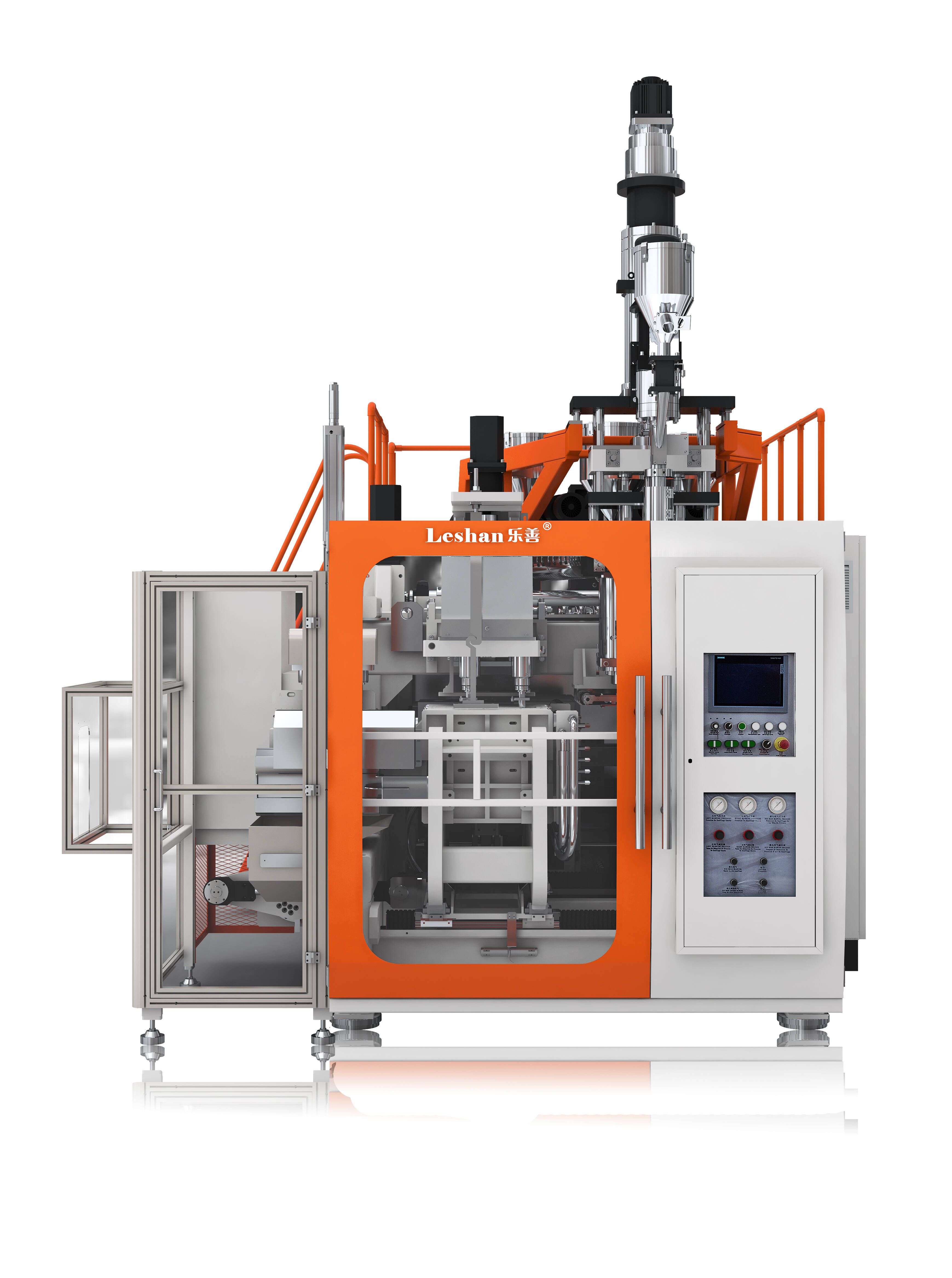
As a commonly used plastic processing machine, extrusion blow molder has the characteristics of powerful functions and easy operation. It can complete the heating, plasticizing, blowing, cooling and other processes of plastic in one mold feeding and molding process, thereby making the product lightweight, durable, transparent and other advantages.
At the same time, the blow molding machine also has high production efficiency, can continuously produce large quantities of products, and is suitable for manufacturing plastic containers of various specifications and shapes.

extrusion blow molder---FAQs Guide
2.Besides the blow molding machine, what other services can Leshan provide?
3.How to choose a suitable extrusion blow molder supplier?
4.What are the general raw materials for extrusion blow molder?
5.Does a plastic blow dryer make PETG or Triton bottles?
6.How does the pressure system of a extrusion blow molder work?
7.What are the steps for cleaning and maintaining a extrusion blow molder?
8.How to solve the malfunction of the extrusion blow molder?
9.What materials can be used to manufacture extrusion blow molder?
10.What are the common problems in the production process of extrusion blow molder?
11.How to ensure the quality of products produced by extrusion blow molder?
12.About extrusion blow molder,Do you provide samples? ls it free or extra?
1.How long is the production cycle of Leshan blow molding machine? What is the lead time?
Production cycle 40-45 days; Delivery time: 60 days.
2.Besides the blow molding machine, what other services can Leshan provide?
Also provide close mold, auxiliary system, key engineering services.
3.How to choose a suitable extrusion blow molder supplier?
We adhere to the principle of quality first and have a complete production quality management system and quality inspection process.
1. Research and compare different suppliers: Start by researching and comparing different blow molding machine suppliers. Look for their experience, reputation, and customer reviews to get an idea of their reliability and quality of products.
2. Consider the type of blow molding machine you need: There are different types of blow molding machines available, such as extrusion blow molding, injection blow molding, and stretch blow molding. Choose a supplier who specializes in the type of machine you need.
3. Quality of machines: The quality of the blow molding machine is crucial for its performance and durability. Look for suppliers who use high-quality materials and have a strict quality control process in place.
4. Customization options: If you have specific requirements for your blow molding machine, look for a supplier who offers customization options. This will ensure that the machine is tailored to your needs and can meet your production requirements.
5. After-sales support: A good supplier should offer after-sales support, including installation, training, and maintenance services. This will ensure that your machine runs smoothly and any issues are resolved promptly.
6. Price and payment terms: Compare the prices of different suppliers and choose one that offers competitive pricing without compromising on quality. Also, consider the payment terms and choose a supplier who offers flexible payment options.
7. Technical support: Blow molding machines are complex equipment, and it is essential to have technical support in case of any issues. Choose a supplier who offers technical support and has a team of experienced technicians.
8. Delivery time: If you have a tight production schedule, it is crucial to choose a supplier who can deliver the machine within the specified time frame. Inquire about their delivery time and make sure it aligns with your production schedule.
9. Warranty and service contracts: A good supplier should offer a warranty for their machines and also provide service contracts for regular maintenance. This will ensure that your machine remains in good condition and has a longer lifespan.
10. Communication and responsiveness: Choose a supplier who has good communication and is responsive to your queries and concerns. This will ensure a smooth and hassle-free buying experience.
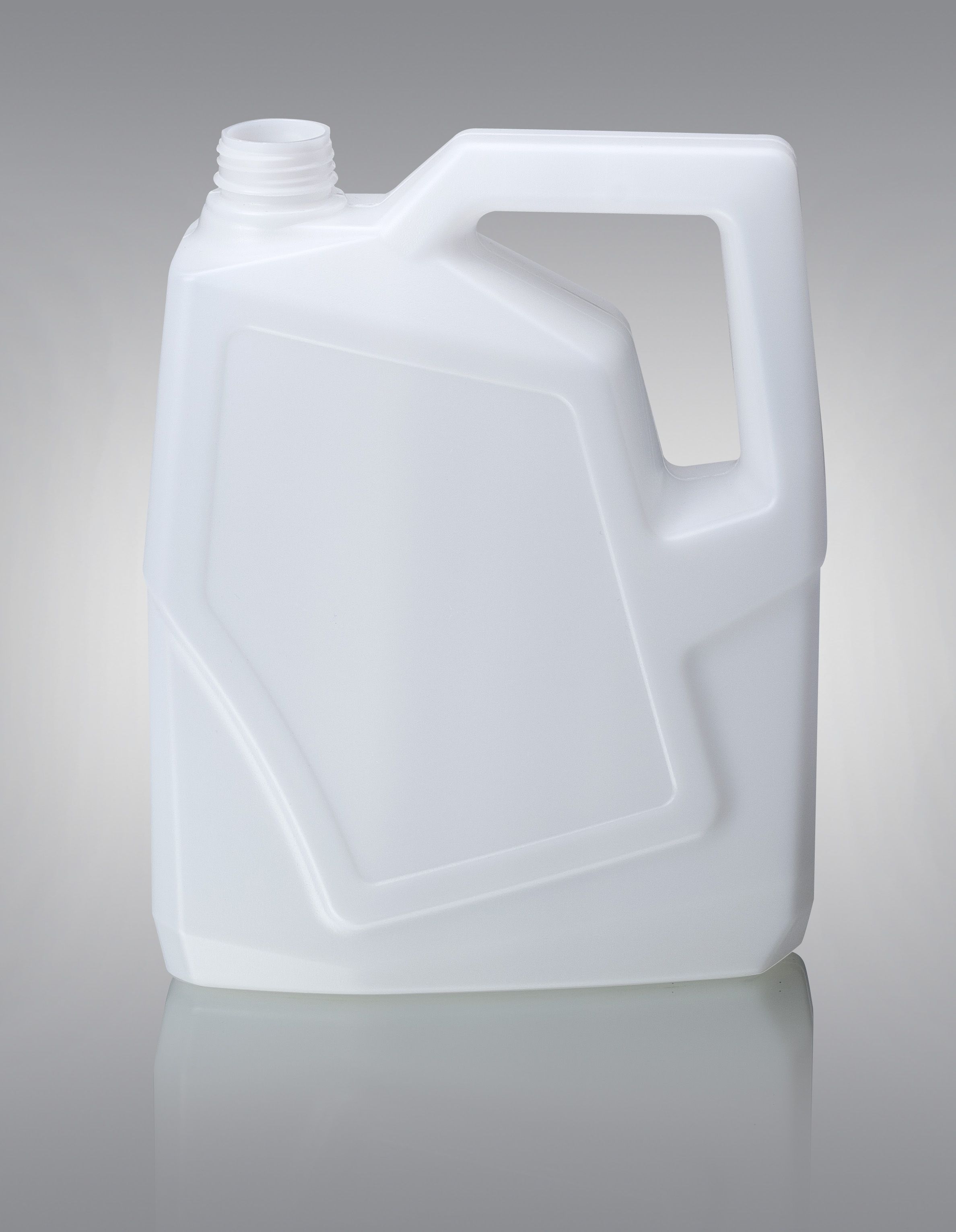
4.What are the general raw materials for extrusion blow molder?
We pay attention to employee development and benefits, and provide a good working environment in order to improve the efficiency of employees and improve the quality management of extrusion blow molder products.
1. Plastic Resin: The most common raw material used in blow molding machines is plastic resin, which is melted and formed into a hollow tube to create the desired shape.
2. Colorants: Colorants are added to the plastic resin to give the final product its desired color.
3. Additives: Additives such as UV stabilizers, antioxidants, and flame retardants may be added to the plastic resin to improve the properties of the final product.
4. Compressed Air: Compressed air is used to inflate the plastic tube and shape it against the mold.
5. Mold Release Agents: Mold release agents are used to prevent the plastic from sticking to the mold during the molding process.
6. Lubricants: Lubricants are used to reduce friction between the plastic and the mold, making it easier to remove the final product.
7. Cooling Water: Cooling water is used to cool the plastic and solidify it into the desired shape.
8. Mold Inserts: Mold inserts are used to create specific features or details on the final product.
9. Labels and Packaging Materials: Labels and packaging materials may be added to the final product after it has been molded.
10. Recycled Materials: Some blow molding machines may also use recycled plastic materials as a raw material, reducing waste and promoting sustainability.
5.Does a plastic blow dryer make PETG or Triton bottles?
Yes, the plastic blow molding machine of Leshan can make PETG and Triton bottles, and their blow molding machine can also make quadruple die heads.
6.How does the pressure system of a extrusion blow molder work?
We have a first -class management team, and we pay attention to teamwork to achieve common goals.
The pressure system of a blow molding machine is responsible for creating and maintaining the necessary pressure to inflate the parison (hollow tube of plastic) and shape it into the desired product. This system typically consists of three main components: the air compressor, the accumulator, and the pressure regulator.
1. Air Compressor: The air compressor is the heart of the pressure system. It supplies compressed air to the machine at a high pressure, typically between 100-150 psi. This compressed air is stored in a tank and then fed into the accumulator.
2. Accumulator: The accumulator is a large tank that stores the compressed air from the air compressor. It acts as a buffer, ensuring a steady supply of air to the machine. The accumulator also helps to regulate the pressure and flow of air to the mold.
3. Pressure Regulator: The pressure regulator is responsible for controlling the amount of air that is released from the accumulator into the mold. It is connected to the accumulator and the mold and is set to maintain a specific pressure level during the blow molding process.
The pressure system works in the following steps:
1. The air compressor compresses air and stores it in the accumulator tank.
2. The accumulator tank releases the compressed air into the pressure regulator.
3. The pressure regulator controls the flow of air into the mold, maintaining a specific pressure level.
4. The mold is closed and the parison is placed inside.
5. The mold is then clamped shut and the parison is inflated with the compressed air, taking the shape of the mold.
6. Once the plastic has cooled and solidified, the mold is opened and the finished product is ejected.
7. The pressure system continues to supply compressed air to the mold until the desired product is formed.
The pressure system is crucial in ensuring the quality and consistency of the blow molded products. It must be carefully monitored and maintained to ensure proper pressure levels are maintained throughout the process.
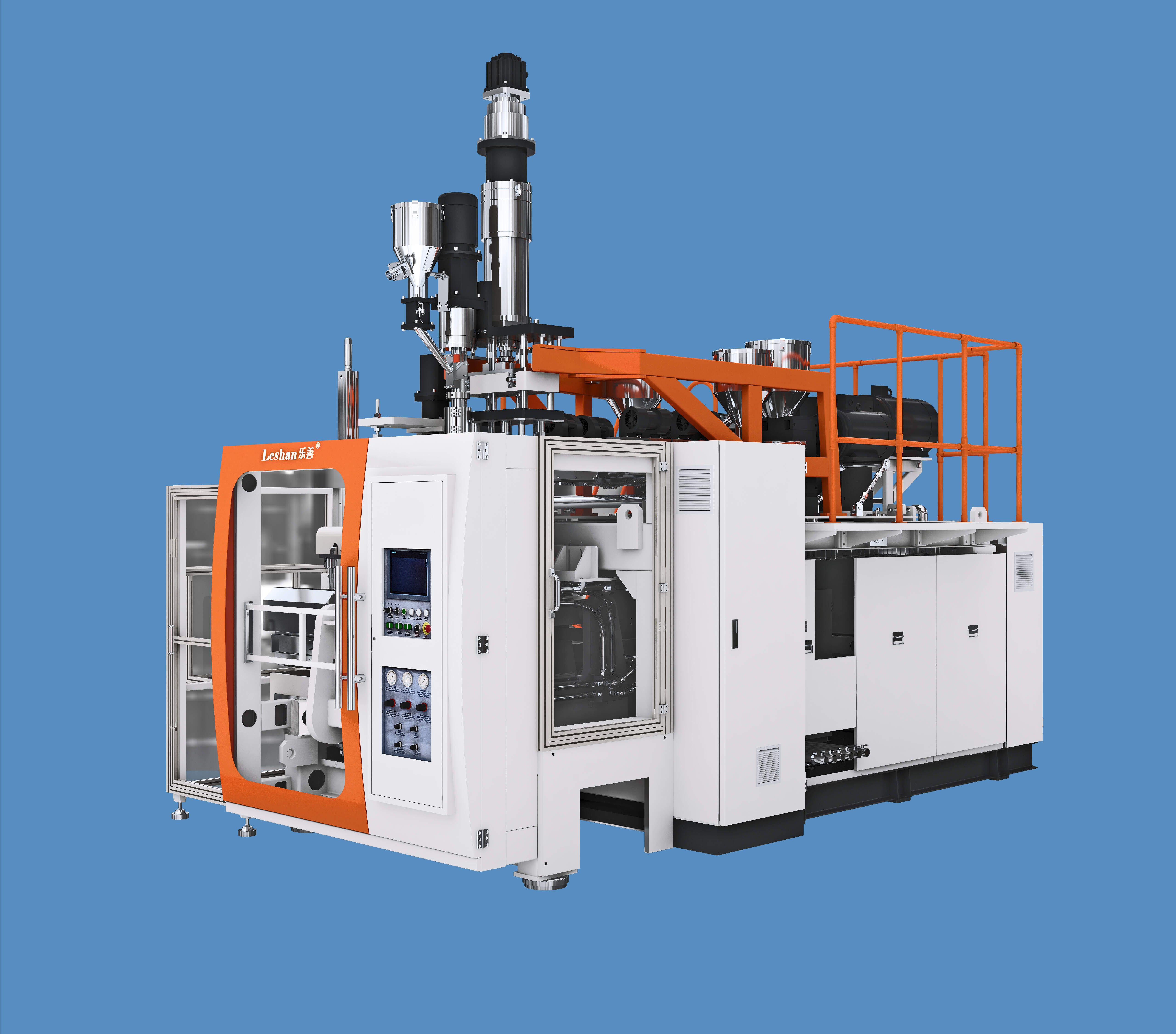
7.What are the steps for cleaning and maintaining a extrusion blow molder?
We adhere to the principle of integrity and transparency, and establish long -term relationships with partners, and we attach great importance to this detail.
1. Shut off and unplug the machine: Before starting any cleaning or maintenance, make sure the machine is turned off and unplugged to avoid any accidents.
2. Remove excess material: Use a scraper or a brush to remove any excess material from the machine, including the mold, extruder, and die head.
3. Disassemble the machine: Depending on the type of blow molding machine, you may need to disassemble certain parts to access all the areas that need cleaning. Refer to the manufacturer's manual for specific instructions.
4. Clean the mold: Use a mild detergent and warm water to clean the mold. Make sure to remove any residue or buildup from the mold surface. You can also use a specialized mold cleaner for tougher stains.
5. Clean the extruder and die head: Use a brush or scraper to remove any residue or buildup from the extruder and die head. You can also use a specialized cleaner for these parts.
6. Check and clean the cooling system: The cooling system is essential for maintaining the temperature of the machine. Check for any clogs or buildup in the cooling channels and clean them with a brush or compressed air.
7. Lubricate moving parts: Use a lubricant recommended by the manufacturer to lubricate all the moving parts of the machine. This will help prevent wear and tear and ensure smooth operation.
8. Inspect and replace worn parts: Check all the parts of the machine for any signs of wear and tear. Replace any damaged or worn parts to ensure the machine's optimal performance.
9. Reassemble the machine: Once all the parts are cleaned and inspected, reassemble the machine following the manufacturer's instructions.
10. Test the machine: Before using the machine again, run a test cycle to ensure everything is working correctly.
11. Regular maintenance: To keep the machine in good working condition, it is essential to perform regular maintenance tasks such as cleaning, lubricating, and inspecting the machine. Refer to the manufacturer's manual for a recommended maintenance schedule.
8.How to solve the malfunction of the extrusion blow molder?
As one of the top extrusion blow molder manufacturers in China, we take this very seriously.
1. Check the power supply: Make sure the machine is properly connected to a stable power source. If there is a power surge or fluctuation, it can cause the machine to malfunction.
2. Inspect the air supply: The blow molding machine requires a steady supply of compressed air to function properly. Check the air compressor and make sure it is providing enough pressure and volume.
3. Check the temperature settings: The temperature of the machine's heating elements must be set correctly for the plastic to melt and form properly. Make sure the temperature settings are appropriate for the type of plastic being used.
4. Clean and lubricate the machine: Over time, dust, debris, and residue can build up on the machine, causing it to malfunction. Clean and lubricate all moving parts to ensure smooth operation.
5. Check for worn or damaged parts: Inspect all parts of the machine for wear and tear. Replace any damaged or worn parts to prevent further malfunctions.
6. Adjust the mold: If the product being produced is not forming correctly, the mold may need to be adjusted. Make sure the mold is properly aligned and tightened.
7. Consult the manual: If the above steps do not solve the problem, consult the machine's manual for troubleshooting tips and solutions specific to your machine.
8. Call a professional: If the problem persists, it may be best to call a professional technician to diagnose and repair the machine. Attempting to fix complex issues without proper knowledge and training can cause further damage.
9.What materials can be used to manufacture extrusion blow molder?
We should enjoy a good reputation in the industry, and we can increase the added value of the products of cooperative customers through technological innovation.
1. Steel: The main structural material used in blow molding machines is steel, which provides strength and durability to the machine.
2. Aluminum: Some parts of the machine, such as the extruder, may be made from aluminum due to its lightweight and corrosion-resistant properties.
3. Plastic: The molds used in blow molding machines are typically made from plastic, such as high-density polyethylene (HDPE) or polypropylene (PP).
4. Rubber: Rubber is used for seals and gaskets in the machine to prevent leakage and ensure airtightness.
5. Brass: Brass is used for valves and fittings in the machine due to its corrosion resistance and ability to withstand high temperatures.
6. Copper: Copper is used for electrical components and wiring in the machine due to its good conductivity.
7. Stainless steel: Some parts of the machine, such as the heating elements, may be made from stainless steel due to its resistance to corrosion and high temperatures.
8. Glass: Glass is used for the viewing window on the machine, allowing operators to monitor the production process.
9. Ceramic: Ceramic is used for heating elements and insulation in the machine due to its ability to withstand high temperatures.
10. Composites: Some parts of the machine, such as the control panel, may be made from composite materials, which offer a combination of strength, durability, and lightweight properties.
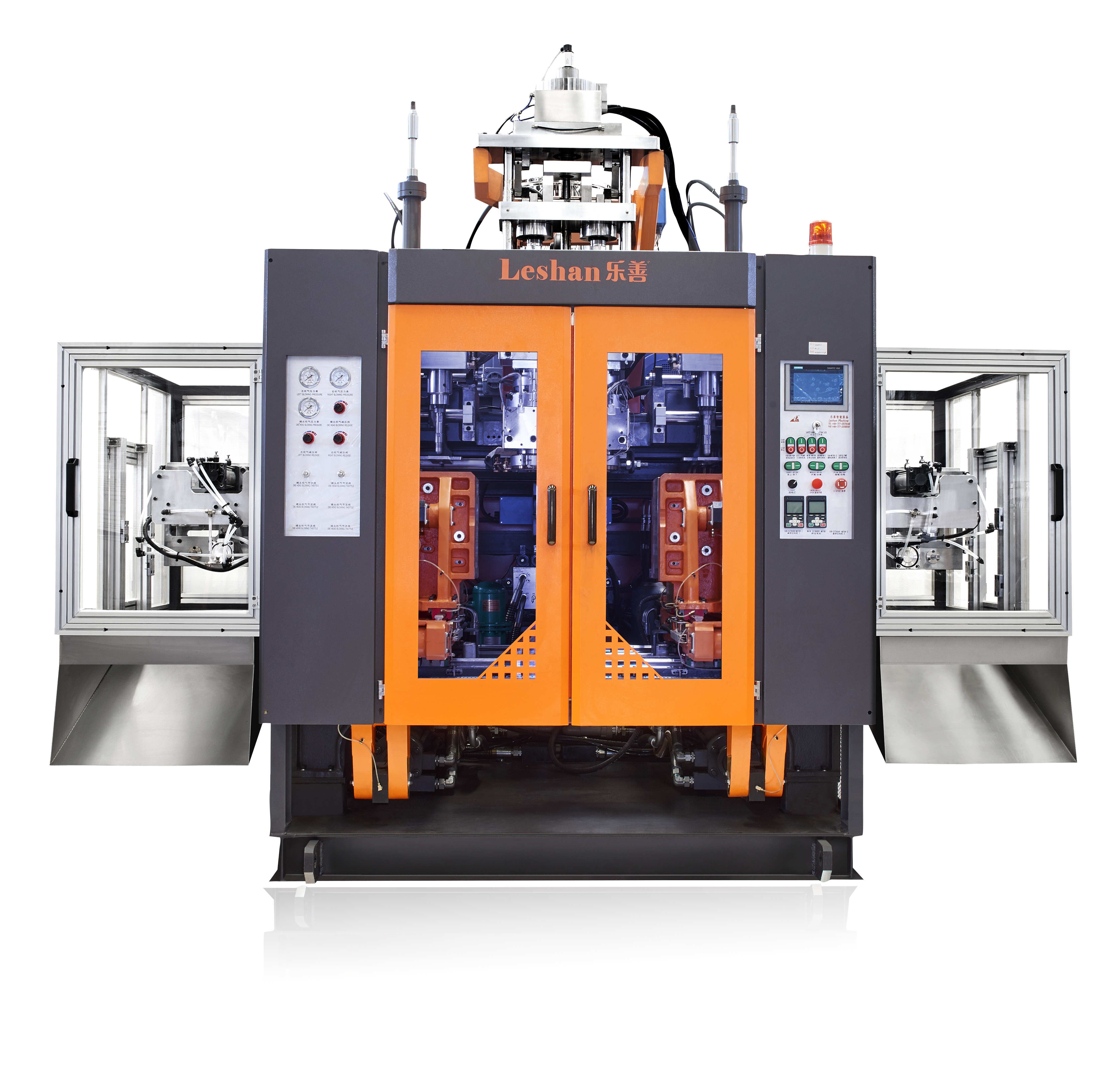
10.What are the common problems in the production process of extrusion blow molder?
As one of the extrusion blow molder market leaders, we are known for innovation and reliability.
1. Inconsistent Wall Thickness: This is a common problem in blow molding machines where the thickness of the plastic material is not uniform throughout the product. This can lead to weak spots in the product and affect its overall strength and durability.
2. Flashing: Flashing occurs when excess plastic material leaks out of the mold during the production process. This can result in a rough or uneven surface on the final product, affecting its appearance and functionality.
3. Warping: Warping is a common problem in blow molding machines where the product becomes distorted or deformed during the cooling process. This can be caused by uneven cooling or improper mold design.
4. Air Traps: Air traps occur when air gets trapped inside the mold during the production process. This can result in air bubbles or voids in the final product, affecting its strength and appearance.
5. Poor Surface Finish: Poor surface finish can be caused by a variety of factors, including improper mold design, poor quality plastic material, or inadequate cooling. This can result in a rough or uneven surface on the final product.
6. Leaks: Leaks can occur in blow molding machines due to worn or damaged seals, improper alignment of the mold, or inadequate clamping force. This can result in product defects and production downtime.
7. Contamination: Contamination can occur in the production process when foreign particles or impurities get mixed in with the plastic material. This can result in defects in the final product and affect its quality and functionality.
8. Machine Malfunctions: Like any other machinery, blow molding machines can experience malfunctions such as electrical issues, mechanical failures, or software glitches. These can result in production delays and affect the overall efficiency of the production process.
11.How to ensure the quality of products produced by extrusion blow molder?
We have established long-term and stable partnerships with our suppliers, so we have great advantages in price and cost and quality assurance.
1. Regular Maintenance: Regular maintenance of the blow molding machine is essential to ensure its proper functioning and production of high-quality products. This includes cleaning, lubrication, and replacement of worn-out parts.
2. Quality Control Checks: Implementing a quality control system that includes regular checks and inspections of the products produced by the blow molding machine can help identify any defects or issues early on.
3. Proper Training: Ensure that the operators and technicians operating the blow molding machine are properly trained and have a good understanding of the machine's capabilities and settings.
4. Use High-Quality Materials: The quality of the raw materials used in the blow molding process directly affects the quality of the final product. Therefore, it is important to use high-quality materials that are suitable for the specific product being produced.
5. Optimize Process Parameters: The process parameters such as temperature, pressure, and speed can significantly impact the quality of the products produced. It is important to optimize these parameters for each product to ensure consistent quality.
6. Regular Testing: Conducting regular testing of the products produced by the blow molding machine can help identify any issues or defects and make necessary adjustments to improve the quality.
7. Implement Quality Standards: Adhering to industry standards and regulations for blow molding can help ensure the production of high-quality products.
8. Continuous Improvement: Continuously monitoring and analyzing the production process can help identify areas for improvement and implement changes to enhance the quality of the products produced.
12.About extrusion blow molder,Do you provide samples? ls it free or extra?
Yes,we could offer you the sample.But it's not free.You need to pay for the sample and the cost of freight.
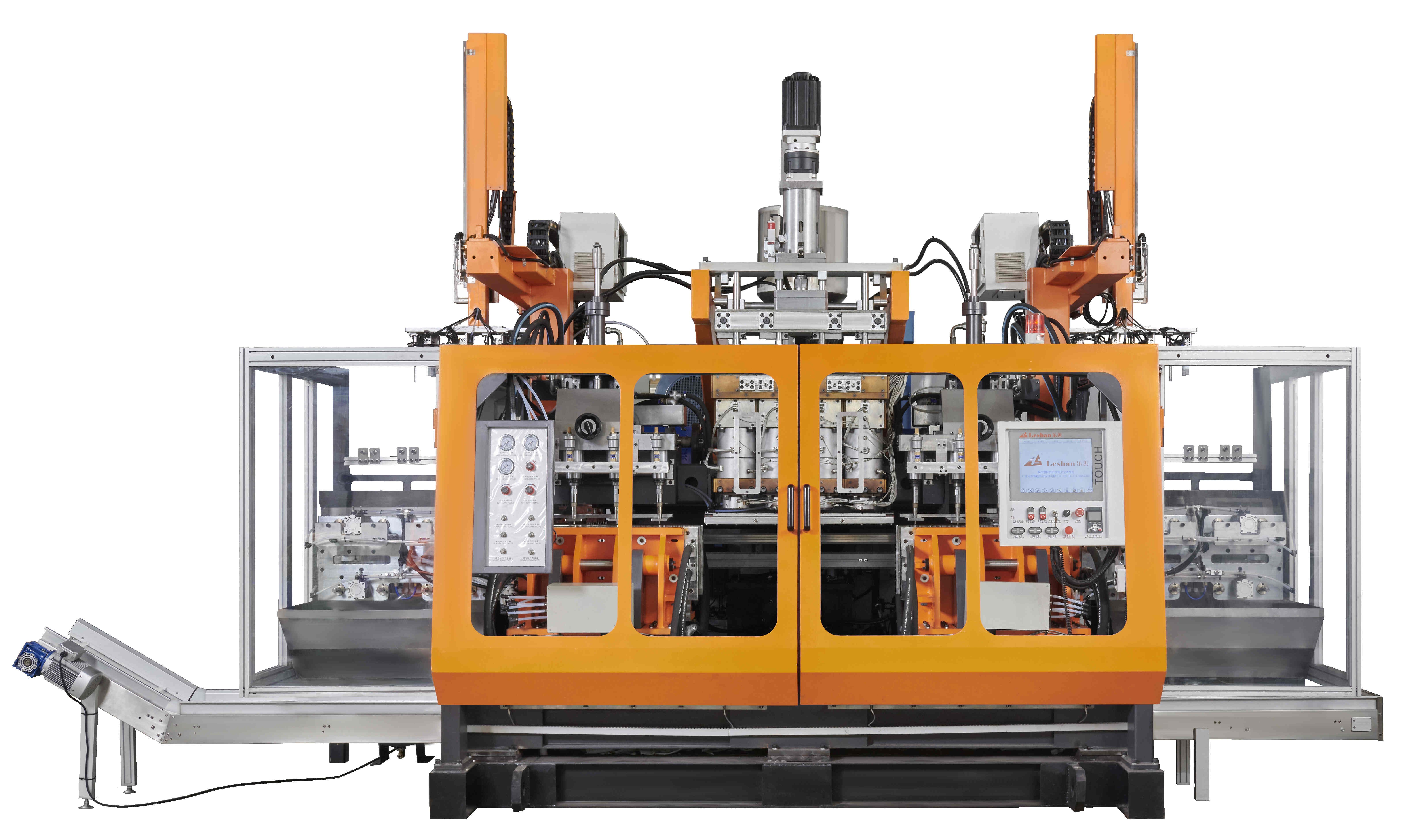
Tags: accumulator blow molding machine
